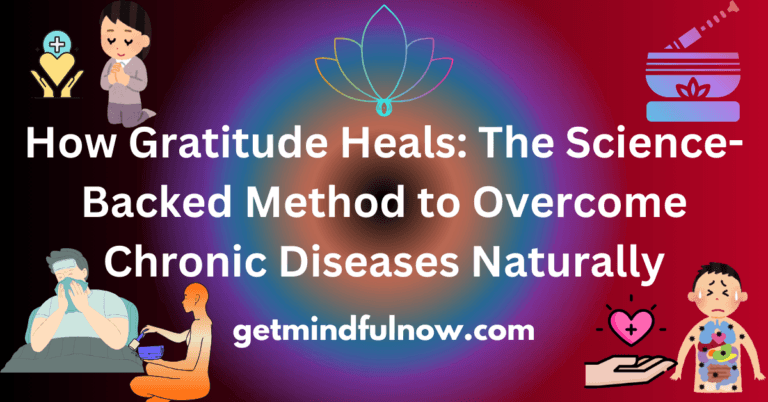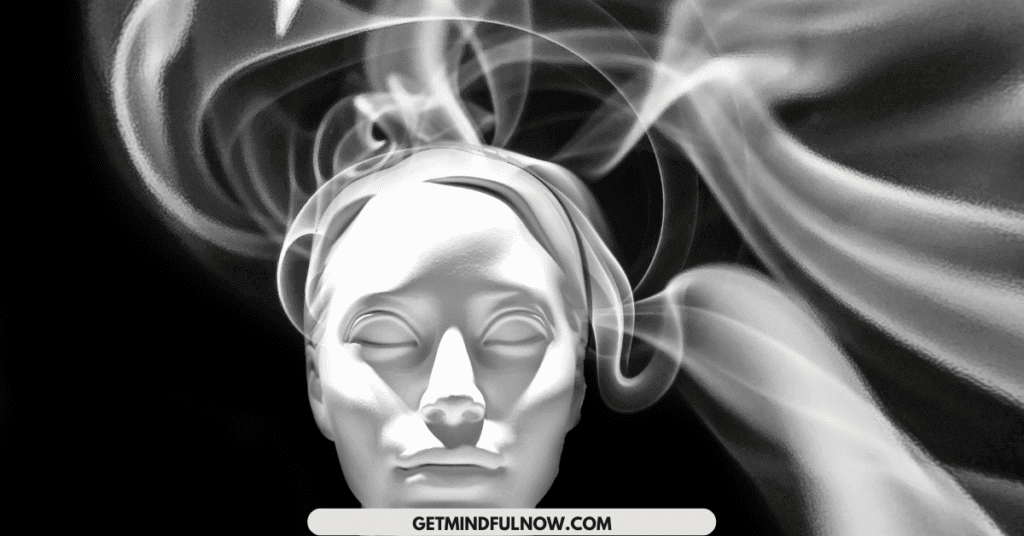When we think of gratitude, we often associate it with something as simple as saying “thank you” or appreciating the small things in life. But what if I told you that gratitude could be much more than just a pleasant sentiment?
What if this simple practice could actually rewire your brain, heal your body, and even help you overcome chronic illnesses? This isn’t just wishful thinking; it’s backed by science and the groundbreaking research of Dr. Joe Dispenza.
Let me share my personal journey with you. I was diagnosed with hypothyroidism, a condition that affects the thyroid gland, leading to fatigue, weight gain, and a host of other frustrating symptoms.
For a long time, I struggled, trying various diets, and supplements, but nothing seemed to work. It wasn’t until I took a holistic approach, focusing on my mental and emotional well-being, that things began to shift. The key part of my healing?
Gratitude. But it wasn’t just about feeling grateful—I changed my entire mindset and personality, and my health followed suit. I’ll share more on my journey (with test reports as proof) later in this article. For now, let’s dive into the science behind why gratitude can be a powerful tool for healing.
Understanding the Science: Dr. Joe Dispenza’s Research on Gratitude and Healing
Dr. Joe Dispenza, a renowned researcher, author, and speaker, has dedicated much of his career to understanding the mind-body connection. His research reveals that our thoughts and emotions can directly influence our biology. In his book Becoming Supernatural, Dispenza explains how gratitude can trigger over 1,400 positive chemical reactions in the body, promoting growth and repair at a cellular level. He specifically highlights the impact of gratitude on the heart in the “Heart Chapter,” explaining that when we feel truly grateful, we activate our autonomic nervous system, which helps balance hormones, improve immune function, and initiate healing.
- Studies have also shown that gratitude journaling can reduce diastolic blood pressure and improve heart rate variability, which are markers of cardiovascular health. This practice also helps shift the body into a “rest and digest” state, enhancing the body’s natural healing processes.
- Research published in the Journal of Psychosomatic Research found that gratitude can positively affect sleep quality by promoting positive thoughts before bedtime. This reduces the likelihood of insomnia and improves overall sleep quality.

But how does this work, exactly? Let’s break it down:
- Gratitude Changes Brain Chemistry: When we practice gratitude, our brain releases dopamine and serotonin—neurotransmitters responsible for feelings of happiness and well-being. This shift in brain chemistry can help us overcome negative thought patterns and reduce stress.
- Heart-Brain Coherence: Dispenza’s research emphasizes the concept of “heart-brain coherence,” where aligning the heart’s electromagnetic field with the brain’s signals creates a state of balance and harmony in the body. When you’re in this state, your body can produce anti-aging, regenerative chemicals that support healing.
- Epigenetic Changes: Dr. Dispenza also talks about the role of epigenetics—how our environment, thoughts, and emotions can influence gene expression. Essentially, gratitude can send new electrical and chemical signals to our cells, which can reverse disease processes by turning on health-promoting genes and turning off disease-causing ones.
The Process of Changing Your Inner State
I get it—believing that gratitude can heal your body may sound too good to be true. But let me explain how it works. According to Dispenza, the key is not just to think grateful thoughts, but to feel gratitude deeply and consistently. This isn’t about pretending everything is fine or ignoring your problems; rather, it’s about shifting your focus and energy to a state of appreciation.

Step 1: Rewiring Your Mind
- Change Your Thoughts: Your thoughts are like software programs running in your brain. If you’re constantly thinking about your pain, worries, or stress, you’re reinforcing those patterns. Gratitude helps you break free from negative loops and creates new neural pathways associated with joy, peace, and well-being.
- Daily Practice: Try this exercise: Every morning, write down three things you’re grateful for. Then, close your eyes and truly feel the emotions of gratitude. This simple habit can start rewiring your brain in as little as 21 days.
Step 2: Shifting Emotional Energy
- Emotions as Signals: Emotions are powerful signals to your body. When you’re stressed, anxious, or angry, your body produces cortisol, a hormone that can weaken the immune system and increase inflammation. Conversely, feeling grateful signals your body to produce chemicals like oxytocin, which lowers blood pressure and promotes healing.
- Heart-Centered Breathing: Practice breathing in and out through your heart center while focusing on something you’re grateful for. This can create heart-brain coherence and bring your entire body into a healing state.
Step 3: Transforming Your Identity
- Changing Your Self-Image: If you want to heal, you have to become a new person—someone who is no longer defined by their disease. I had to stop identifying as a “people pleaser” who put others’ needs above my own. By embracing self-love and gratitude for who I truly was, my thyroid condition began to improve.
- Mindful Visualization: Spend 5-10 minutes a day visualizing yourself as healthy, vibrant, and disease-free. Feel the emotions as if it’s already happened. This isn’t just a mental exercise; it creates real physical changes in your brain and body. I have put details at the end and research supported methods.
Real-Life Testimonials
How I Healed Hypothyroidism with Gratitude
Let me share more about my experience. For years, I lived as a chronic people pleaser, always putting others before myself. I was never truly grateful for who I was. But once I started practicing gratitude for my journey, my strengths, and even my weaknesses, everything shifted. Within a year, my thyroid levels normalized. My energy returned, my mood improved, and the symptoms of hypothyroidism faded away.
I’ll attach my before and after lab results here to show you just how powerful this practice can be.


Start Your Own Gratitude Healing Journey
- Mindful Meditation: Start by 15 minutes and gradually take it to at least one hour focusing on your heart, breathing deeply, and feeling gratitude. You can even listen to guided gratitude meditations by Dr. Joe Dispenza on YouTube.
- Affirmations: Use affirmations like “I am grateful for my body’s ability to heal” or “Every cell in my body is filled with gratitude and health.”
Improve Your Skills Once You Become Acquainted with the Idea
After practicing meditations and affirmations, you can amplify your healing journey by integrating these gratitude techniques, helping you deepen your emotional and physical transformation. These methods work synergistically to rewire your mind and body, creating a powerful shift towards optimal health and well-being.
Method 1: The “Three Blessings” Exercise (Adapted from Martin Seligman’s Positive Psychology)
One of the simplest yet most effective ways to cultivate gratitude is by using the “Three Blessings” exercise, popularized by Dr. Martin Seligman, often referred to as the father of Positive Psychology. This technique involves reflecting on three positive things that happened during your day and why they happened. The key is to do this exercise every night before bed.
How to Do It:
- Grab a Journal: Keep a dedicated gratitude journal by your bedside.
- Reflect on Your Day: Before going to sleep, write down three things you’re grateful for that happened that day. These can be as simple as enjoying a cup of coffee, a meaningful conversation, or even the warmth of the sun on your skin.
- Go Deeper: For each of the three things, write down why they happened. This could mean acknowledging your own efforts, someone else’s kindness, or just the luck of circumstances aligning.
- Feel the Gratitude: As you write, take a moment to close your eyes and really feel the gratitude. Let it sink in for a few seconds. This emotional connection is what makes this practice transformative.
Why It Works:
- This exercise rewires your brain by focusing on the positives, training your mind to seek out the good in your life, which in turn decreases anxiety and depression.
- Research shows that people who practice the “Three Blessings” technique for just one week report increased happiness levels for up to six months.
By incorporating gratitude into your daily routine, you’re not just improving your mood—you’re fostering real, measurable health benefits that can contribute to overcoming chronic conditions. This method aligns with the findings that gratitude positively influences biomarkers for stress and inflammation, offering a holistic approach to well-being.
Method 2: “Gratitude Walking Meditation” (Inspired by Thich Nhat Hanh’s Mindfulness Practices)
This method combines the physical benefits of walking with the mental benefits of gratitude. Thich Nhat Hanh, a renowned Zen master and mindfulness teacher, has popularized the concept of walking meditation, but when you add an intentional gratitude focus, it can enhance your overall health even further.
How to Do It:
- Choose a Quiet Path: Find a serene environment where you can walk undisturbed. It could be a park, a beach, or even your backyard. The key is to be in a place where you can connect with nature or have some quiet time.
- Set an Intention: Before you start walking, take a moment to set a clear intention to focus on gratitude. It could be as simple as “I am walking to appreciate all the blessings in my life” or “I am grateful for my body’s ability to heal.”
- Sync Your Steps with Your Breath: As you walk, synchronize your steps with your breath. For instance, take a deep inhale for four steps, then exhale for the next four steps. This helps you stay grounded in the present moment.
- Focus on Gratitude: With each step, think of something you’re grateful for. It could be your desired health, a loved one, the fresh air you’re breathing, or even the sensation of your feet touching the ground. As you walk, let your heart fill with appreciation for each blessing.
- Feel the Emotion Deeply: The key is not just to list things in your mind but to actually feel the gratitude as you walk. Let the emotion wash over you. This creates a powerful mind-body connection that can boost your mood and enhance your health.
Why It Works:
- According to a study published in the Journal of Psychosomatic Research, practicing gratitude while engaging in physical activity like walking can lower blood pressure, reduce inflammation, and increase overall heart health.
- Walking meditation combined with gratitude stimulates the release of serotonin and endorphins, known as the “feel-good” hormones, which help reduce stress and boost the immune system.
- Research has also shown that combining mindfulness with gratitude can increase heart rate variability (HRV), a marker of cardiovascular health and resilience to stress. The higher your HRV, the better your body is at adapting to stress and healing itself.
This gratitude walking meditation not only enhances your mental clarity and emotional well-being but also promotes physical health, making it a holistic practice for mind-body healing.
Visualizing the End Results of Being Healthy to Elicit Gratitude
One of the most powerful ways to elicit feelings of gratitude, especially if you’re facing a chronic illness, is through visualization of the end results. Dr. Joe Dispenza often emphasizes the importance of visualizing yourself in a healed, vibrant state. This isn’t just a mental exercise—it’s a method that taps into the science of neuroplasticity and epigenetics.
How Visualization Works:
- Create a Mental Image: Close your eyes and imagine yourself living in perfect health. Picture every detail: your energy levels, your smile, the activities you love doing, the people around you, and even the way your body feels.
- Engage All Your Senses: Don’t just see the image—hear the sounds, feel the sensations, and even smell the scents of the environment you’re picturing. The more vivid the image, the more real it becomes to your brain.
- Elicit the Feeling of Gratitude: While visualizing, feel a deep sense of gratitude as if the healing has already occurred. This gratitude isn’t for something that might happen, but for something that you believe has already been accomplished. Your brain doesn’t know the difference between a vividly imagined experience and a real one, so it starts to generate the same neurochemical responses.
Why This Helps:
- According to Dr. Dispenza, when you visualize your healthy future self and combine it with the elevated emotion of gratitude, your body starts producing chemicals that signal healing. This shifts your body from a state of stress to one of growth and repair.
- Gratitude during visualization changes your brain’s neural pathways, creating a new reality for your mind and body. It’s like telling your body that the healing is already happening, which then encourages the cells to follow suit.
This practice helps in transforming your identity from someone who is “sick” to someone who is “healing” or “healthy,” which can trigger a cascade of positive biological changes.
By incorporating these two gratitude practices and the power of visualization, you’re not just thinking positively—you’re actively engaging in practices that can rewire your brain, change your body’s chemistry, and help you overcome chronic conditions.
Conclusion:
Gratitude is more than just a feel-good emotion—it’s a powerful tool for transforming your health. By changing your thoughts, emotions, and identity, you can activate your body’s natural healing abilities. Don’t just take my word for it; give it a try and witness the changes for yourself.
FAQs: Common Questions About Gratitude and Healing
1. Can gratitude really heal chronic diseases?
Yes, according to research by Dr. Joe Dispenza, gratitude can activate the body’s healing processes. While it’s not a magic cure, it can significantly improve your body’s ability to repair and regenerate.
2. How long does it take to see results?
It varies. Some people see improvements within weeks, while others may take months. Consistency is key.
3. Is gratitude just another form of positive thinking?
No, it goes deeper. Gratitude changes your brain chemistry, hormone levels, and even gene expression.
4. Can I practice gratitude if I don’t feel grateful?
Yes, start by “fake it till you make it.” Over time, the emotions will follow.
5. Does science back up the effects of gratitude?
Absolutely! Research from institutes like HeartMath and studies by Dr. Joe Dispenza support the physiological benefits of gratitude.
6. Can gratitude work alongside traditional medicine?
Yes, gratitude can complement traditional treatments and enhance overall well-being.








